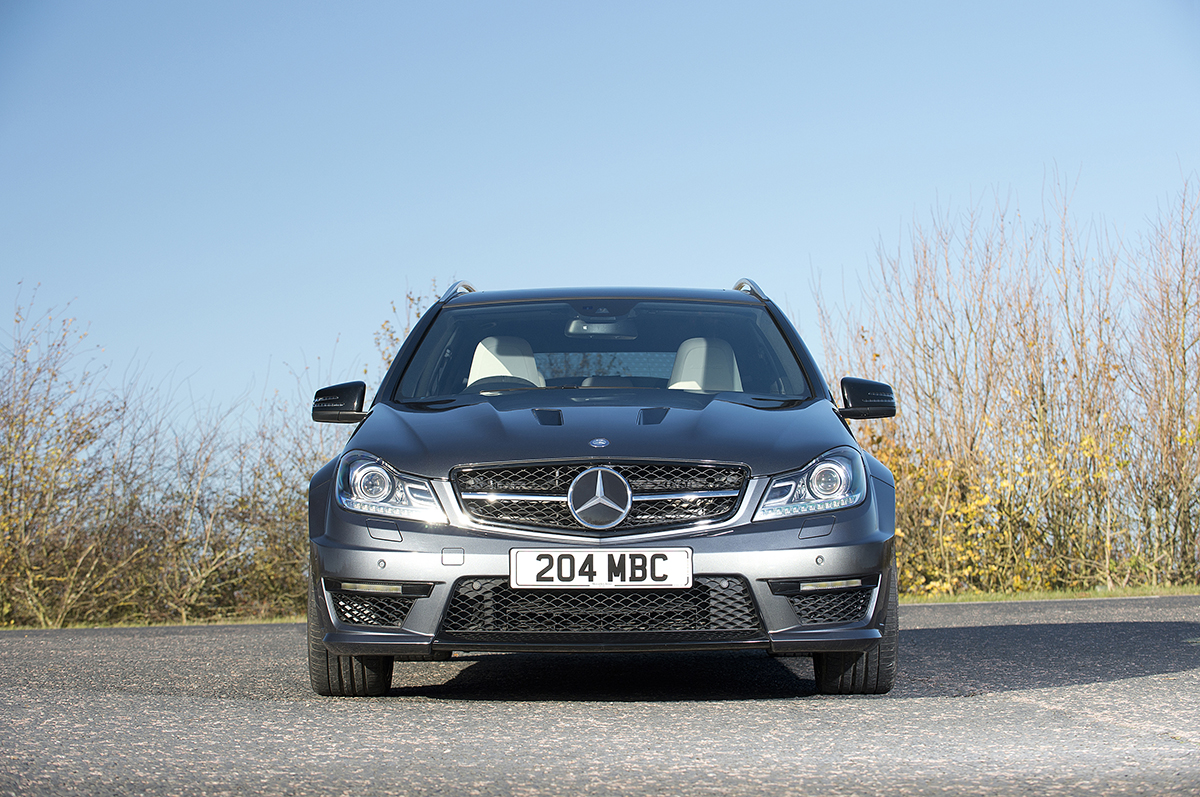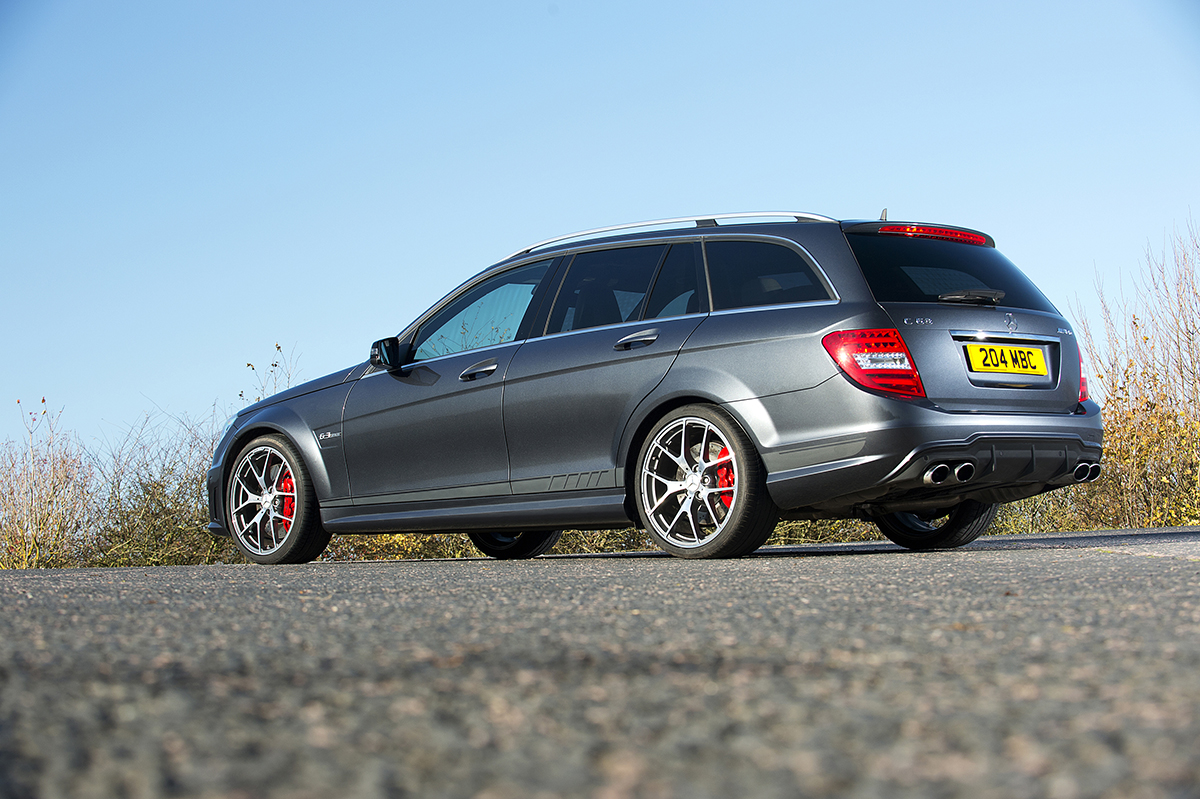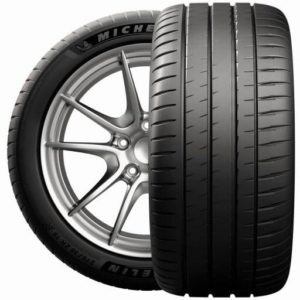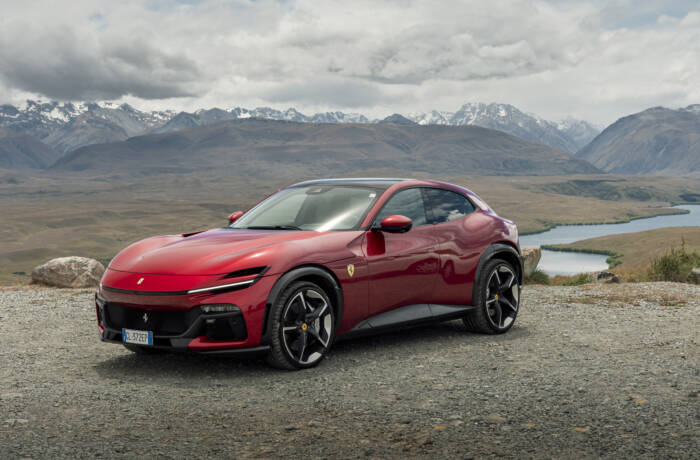
The Mercedes-Benz C63 AMG: Mercedes’ high-performance version of a family car
Our high-performance Mercedes-Benz C63 AMG is transformed further by the simple expedients of an excellent annual service, and new high performance tyres from Michelin
One day, in the not too distant future, the idea of having your own metal encased room, with leather-covered chairs,which stands idle for the vast majority of the time, may seem as old-fashioned as owning a watch featuring a gyrating cage designed in the 18th century to try to counter affect the force of gravity.
Until then, I’m going to make the most of my Mercedes-Benz C63 AMG wagon. This car is the last in the line. A sleek, low, white, black estate car/station wagon, it is Mercedes’ own souped up version of its ubiquitous family transportation. In this particular case, it came with a 6.2 litre V8 engine, with more than 450 hp powering a relatively small car.
Follow LUX on Instagram: the.official.lux.magazine
These days, almost all powerful cars have efficient, turbocharged engines. My C 63, on the other hand, has a big, non-turbo charged V8 engine. To connoisseurs, this is like drinking an authentic Bordeaux first growth, rather than a New World imitator. Or listening to a Stradivarius violin. It’s not about the end result, it’s about how the result is produced. The car is only a couple of years old, but, car design cycles be being what they are, I remember speaking to the engineers at AMG, Mercedes racing division, almost two decades ago when they were talking about developing this particular engine. They were as excited as small children. In my car, it gains power with a gentle gurgle, which turns into a rumble and then a scream, and all the while the car pulls harder and harder. For a car nut, it’s an engine on a par with offerings from Ferrari. And it’s powering a car that can happily swallow a family and its sports and musical equipment, plus a family friend, and the imaginary Irish Wolfhound the family are lobbying to own.
A powerful turbocharged engine of today, on the other hand, simply punches along efficiently. Changes of tone and timbre and that mechanical sensation of being at a different stage in the power evolution are minimal. And electric cars make no sound at all.

Dino, on the other hand, talked me through any potential issues with the car with deep knowledge, and was delightful to deal with. The car passed with flying colours, and the real surprise was when it came home. I thought its slight grumpiness had been due to the cold winter weather, but in fact with an oil change and related items in the service, the thoroughbred engine was hugely, demonstrably smoother and more refined. Note to self: service the car next time before she even asks.
When you have such a powerful engine in a relatively light car, one challenge you may come across as with the tyres. After all, these are the only things responsible for transmitting the kinetic energy of the car onto the road and thus propelling it forward. On my car, I had the correct specification high-performance tyres, which had been on the wheels for nearly three years. Accelerating hard out of a junction or corner, sometimes the tyres would spin round without getting traction. In heavy rain, fast cornering sometimes made me wonder if the car was going to hang onto the road or not.
I put all this down simply to the slight imbalance. The car was just a bit too powerful for its own good, or so I thought. But on closer inspection, my tyres were halfway worn. Time to change them. Rather than simply change for more tired of the same make, I decided to do what few people end up doing, and change all four tyres to the latest and supposedly best versions for a completely different marque.
Read more: Why you should use Instagram as your diary
I had heard more than good things about the latest tire from Michelin, the Pilot Sport 4S. Enough users reported that it had transformed their supercar driving experience, that I thought I would take the plunge on all four tyres on the AMG. But how big a difference could really make? Would it really be worth it?

Michelin PS4S tyres
As I drove the car out of the Kwik Fit depot in Chelsea wearing four new Michelin PS4S tyres, I muttered aloud to myself that the car had been transformed. First, and unexpectedly, the ride was smoother. Lumps, bumps and little potholes in the road were not transmitted to me faithfully, shopping trolley style, as they had been with the previous tyres.
This was unexpected because high-performance tyres are, by nature, hard. They are made to give little in cornering, so that they can transmit the forces generated by the car faithfully to the road.
So, would the flipside be softer, less racy handling? I didn’t want that. Astonishingly, though, handling was also transformed – in a positive direction. The car seem to have a bigger, broader, stickier footprint on the road. You could feel more, in a positive way, exactly how the car was positioned for a corner. There was no more wheel spin on exiting small roads in the cold and wet; when it rained, the car felt like it was on rails, rather than threatening to skate off them. This is why these cars were so sensational when they were new, I remembered, and why car writers consider them modern classics.
Searching for an analogy, the best I could come up with after a couple of weeks was going on previously it felt like the car had been wearing a rather old pair of dress shoes with shiny leather soles. Now it was wearing top specification athletic running shoes with support everywhere and super gritty soles. The analogy also extended to the ride, with the cushioning that implies. The manufacturer’s blurb says this is due to “a hybrid belt of aramid and nylon ensuring the optimum transmission between steering instruction and the road” – which must be true.
The difference is so immense, that I have asked myself what I would have thought, had the car been taken away, and the tyres changed, without my knowledge. If I had been driving the car and forced to guess what exactly had been upgraded, I might of said it had a whole new suspension system.
I can’t think of any further praise that saying that I am now seriously considering fitting for the same tyres to one of my Ferraris, which had four new tyres from the marque previously worn by my AMG, just two years ago. Watch this space.
And as for people owning high-performance metal rooms years into the future: well, there’s still quite a market for archaic, gravity defying and fabulous tourbillon mechanical watches.
Find out more at michelin.com and mercedes-benz.co.uk








